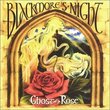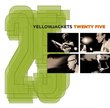| All Artists: Adolph Martin Foerster, Henry Holden Huss, Mortimer Wilson, Rawlins Piano Trio Title: American Romance Members Wishing: 0 Total Copies: 0 Label: Albany Records Release Date: 8/31/2004 Genre: Classical Styles: Chamber Music, Historical Periods, Classical (c.1770-1830) Number of Discs: 1 SwapaCD Credits: 1 UPC: 034061069225 |
Search - Adolph Martin Foerster, Henry Holden Huss, Mortimer Wilson :: American Romance
 | Adolph Martin Foerster, Henry Holden Huss, Mortimer Wilson American Romance Genre: Classical
Henry Holden Huss was born in Newark, New Jersey, and grew up in New York City, where his family moved when he was two. His father had emigrated from Germany and became a successful organist and piano teacher in this count... more » |
Larger Image |
CD DetailsSynopsis
Album Description Henry Holden Huss was born in Newark, New Jersey, and grew up in New York City, where his family moved when he was two. His father had emigrated from Germany and became a successful organist and piano teacher in this country. Young Huss began to study music with his father, then others in this country, finally traveling to Munich to study at the Royal Conservatory. He studied piano, organ and composition with two other American students who began the same time he did: Horatio Parker and Arthur Whiting. All three excelled. Upon his return to the United States, Huss received some recognition with his Piano Concerto (his graduation piece from Munich). He performed it both with the Boston Symphony and the New York Philharmonic. Daniel Gregory Mason related to Huss in 1892, that John Knowles Paine, the dean of American composers with whom Mason was studying at the time, considered Huss "the best of the young generation of American composers". Many shared this opinion! . But like many other American composers of the time, Huss found it very difficult to get his music performed and published. His Trio in d minor, Op. 23, was composed in 1886 and dedicated to his teacher Joseph Rheinberger. Mortimer Wilson was born in Charlton, Iowa. He studied organ, violin and composition with Frederick Grant Gleason at the Chicago Musical College. He then studied in Leipzig with Max Reger. John Tasker Howard (the great observer of early American composers) wrote of his rigorously trained former teacher that he "?could toss complicated counterpoint from his pen as easily as he could talk to his friends". Upon his return to this country in 1911, he taught at the Atlanta Conservatory and conducted the Atlanta Philharmonic Orchestra. In 1916, he moved to Brenau College in Gainesville, Georgia. By 1918, he had taken a job as consulting editor for the National Academy of Music in New York City, where he remained until his death. Today, his works are mostly in manuscript and includes five symphonies and a great deal of chamber music. The suite, From My Youth, Op. 5 was published in 1911 and premiered by the Sitting Trio. Adolf Martin Foerster was born in Pittsburgh. He began with piano lessons from his mother and then pursued music in the public schools which had just incorporated Lowell Mason's ideas about music education into its public schools. He also then went to Leipzig to complete his education. Upon his return to America he spent one year teaching in Ft. Wayne, Indiana, before he returned to Pittsburgh, where he soon became one of the musical leaders of the community. Though mainly known as a songwriter, Foerster's many compositions include numerous suites, overtures, and festival marches for orchestra; a violin concerto, two other piano trios; a piano quartet and pieces for violin and piano. His Trio Serenade was composed in 1907 and is a lush romantic work. Similar CDs
|
CD ReviewsA Real Find! J Scott Morrison | Middlebury VT, USA | 09/02/2004 (5 out of 5 stars) "Until this CD came my way, I'd never heard of the Rawlins Piano Trio. The three musicians are all faculty members of the Department of Music at the University of South Dakota, and they have recorded two previous CDs, both of which present little-known piano trio music of American composers. The composers whose trios are performed on those discs include Henry Hadley, Daniel Gregory Mason, Charles Wakefield Cadman, Ernest Bloch, Samuel Adler, William Clifford Heilman, and Horatio Parker. This disc adds music by Henry Holden Huss (1862-1953), Mortimer Wilson (1876-1932), and Adolph Martin Foerster (1854-1927), all of whom belong to the generation of American composers 'from the period before [the time of] Aaron Copland, when American music is generally thought to have arrived,' according to the fascinating booklet notes by the group's cellist, Richard Rognstad. He makes the point that there are untold numbers of Americans who had studied in Germany (and other parts of Europe) who came home to compose music that has since been lost to memory. He discovered the works on this disc (and the previously recorded two CDs) and thought they deserved to be disseminated. Indeed, he goes further to say that 'The Rawlins Piano Trio has adopted revivifying this heritage as part of its mission.' If this CD is any indication of what we've been missing, I'd say that their task is a worthy one indeed.
All three works--Huss's 'Trio in d minor, Op. 23' ('The Munich'), Wilson's suite 'From My Youth, Op. 5,' and Foerster's 'Serenade, Op. 61--are cast in roughly Brahmsian language; they are full of singing melodies and late 19th-century harmonies and part-writing. They are pleasant without being saccharine, strong without being abrasive. Huss's trio was written in 1886 as a graduation present for his teacher in Munich, Josef Rheinberger. It starts out with a lushly harmonized melody that reminds me in its effect of that of Brahm's own Op. 8 piano trio. This work was fostered initially by one of America's first and greatest chamber violinists, Franz Kneisel, but its last known performance was in 1891. What a loss. This is a masterfully crafted four-movement work with an alternately dramatic and lyrical sonata-allegro first movement, a songful Andante that features a lovely 4/4 cello melody, an energetic and playful Scherzo, and a Finale which opens with a canonic version of the Andante's cello melody that is followed by the main body of the movement, a brisk, jocular 2/4 rondo. Wilson's 'From My Youth' was originally published in two sets, each with four movements, but Rognstad had not been able to find the missing first set until after this recording was made. We're told those recently found pieces will be on the Trio's next release. The Trio here records the last four brief characteristic pieces--'Funeral of a Calico Cat,' 'Love-Song of an Alpine Doll,' 'Tin-Soldier Dress-Parade,' & 'Over the Little Blue Tea-Set.' From the titles one can discern that these are, with the exception of the 'Funeral,' more in the nature of salon pieces. 'Funeral,' though, is rather more dramatic--and at three minutes it is the longest--and manages to convey sadness as well as mock ceremony. There are some interesting instrumental effects in this set--cat's meows in the 'Funeral,' a bugle call in violin harmonics in 'Tin-Soldier,' and the chattering of ladies in 'Tea-Set.' Rognstad tells us that Wilson orchestrated the suite and it was played by the New York Philharmonic early in the last century. Foerster's three-movement 'Serenade' is an exuberantly romantic work. The first movement has a gorgeous cello melody that serves as the scaffolding for the quasi-sonata-allegro movement. The Andante begins with a piano statement of an equally lovely melody eventually decorated with cello and violin counter-melodies that have their own interest. The allegro Finale is a vigorous rustic dance that then quotes the first movement's principal theme which is given contrapuntal treatment, leading to a hearty flourish of a coda, a fitting finish to a life-enhancing work. All of these works are squarely tonal, unabashedly conservative, even for their time. And they are unfailingly delightful in effect. Heartily recommended for those who like discovering heretofore forgotten works, particularly those of the high romantic period. If you love Brahms or, to name an American who is slightly better known from recent Naxos releases, Arthur Foote, this release is for you. The playing, while not quite on the level of, say, the Beaux Arts or Florestan Trio, is much more than satisfactory, and we are unlikely ever to hear any better performances of these pieces unless, mirabile dictu, they become part of the core piano trio repertoire. By the way, a real bonus here is the reproduction of Albert Bierstadt's painting, 'Among the Sierra Nevada,' on the booklet cover. TT=64:39 Scott Morrison" |

 Track Listings (3) - Disc #1
Track Listings (3) - Disc #1


